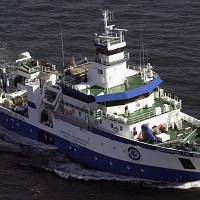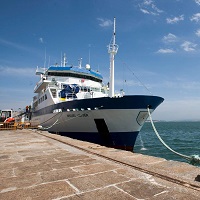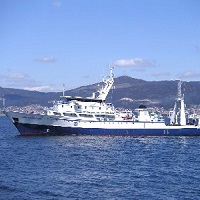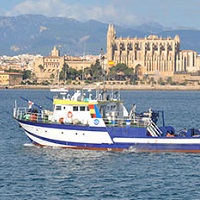Keyword
balances and scales
116 record(s)
Type of resources
Categories
Topics
INSPIRE themes
Keywords
Contact for the resource
Provided by
Years
Formats
Status
-

Oceanographic survey collected in the framework of the following research project: ¿Métodos de Producción de Huevos. Estimación de la biomasa de especies pelágicas de interés comercial: sardina, anchoa, caballa y jurel (ICTIOEVA)¿. This Project is funded by the Instituto Español de Oceanografía and the main scientific objective the survey is to produce an index and a direct estimate of the spawning stock biomass of Sardine (Sardine pilchardus) in the Cantabrian Sea and Bay of Biscay (to 45ºN) using the Daily Egg Production Method (DEPM). Specific aims:a) To estimate the spawning area distribution of sardine and the daily egg production. b) To collect adults to obtain fecundity estimation c) Distribution and abundance of other commercial species of interest: mackerel, horse mackerel and anchovy.d) To describe the oceanographic and meteorological character of the area of study with the aim of relating environmental conditions (temperature, salinity, currents) with the spatial distribution of the ichthyoplankton
-

Study of strategies to reduce discards and unwanted species: selectivity and survival in trawling in Cantabrian-Northwest zone.
-

New calibration tests between B/O Cornide de Saavedra and the B/O Miguel Oliver, by the results of the 2013 campaign Demersal, showing behavior too benthic.
-

Prospecting Scomber scombrus and Trachurus trachurus eggs and adult catches to estimate egg production and fecundity of Scomber scombrus for joint international evaluation of spawning stock biomass of mackerel by the method annual egg production (MPAH) and production eggs Trachurus.
-

Mantenimiento de los colectoresprofundos de langosta, obtención de larvas filosomas y muestreo con dragas en maerl.
-

Prospecting Scomber scombrus and Trachurus trachurus eggs and adult catches to estimate egg production and fecundity of Scomber scombrus for joint international evaluation of spawning stock biomass of mackerel by the method annual egg production (MPAH) and production eggs Trachurus.
-

Main objectives: Aplication of Daily Egg Production Method to estimate Sardine Spawning Stock Biomass. Estimate spawning area of sardine. Secondary objectives: Estimate egg and larva abundances for sardine, anchovy, mackarel and horse mackarel. Measure the salinity , temperature depth in the water column using ctd profiles.
-

Collection of data needed to estimate Abundance and biomass of species of commercial interest
-

Sampling at Ithioplacton stations, CTD stations and pelagic fishing, acoustic sampling with EK60 echo sounder. The general method is to quantify the freshly spawned eggs in the water column on the spawning grounds. Report egg species identification and staging. To be able to establish a relationship between eggs and biomass of the spawning stock, the fecundity of the females must also be determined.
-

The main objective of this series of individual cruises is to produce both an index and a direct estimate of the biomass of the north east Atlantic mackerel stock and an index for the southern and western horse mackerel stocks. The general method is to quantify the freshly spawned eggs in the water column on the spawning grounds, report egg species identification and staging. To be able to establish a relationship between eggs and biomass of the spawning stock, the fecundity of the females must also be determined. The realised fecundity is used in combination with the calculated number of freshly spawned eggs in the water to render an estimate of the spawning stock biomass. To provide reliable estimates of the quantity of spawned eggs and the fecundity an extensive coverage of the spawning area is required both in time and space. Provide temperature data from the CTD casts will be used for the egg ageing procedure. Other environmental variables will be used for hydrographic and spawning area characterization.
 Catálogo de datos del IEO
Catálogo de datos del IEO